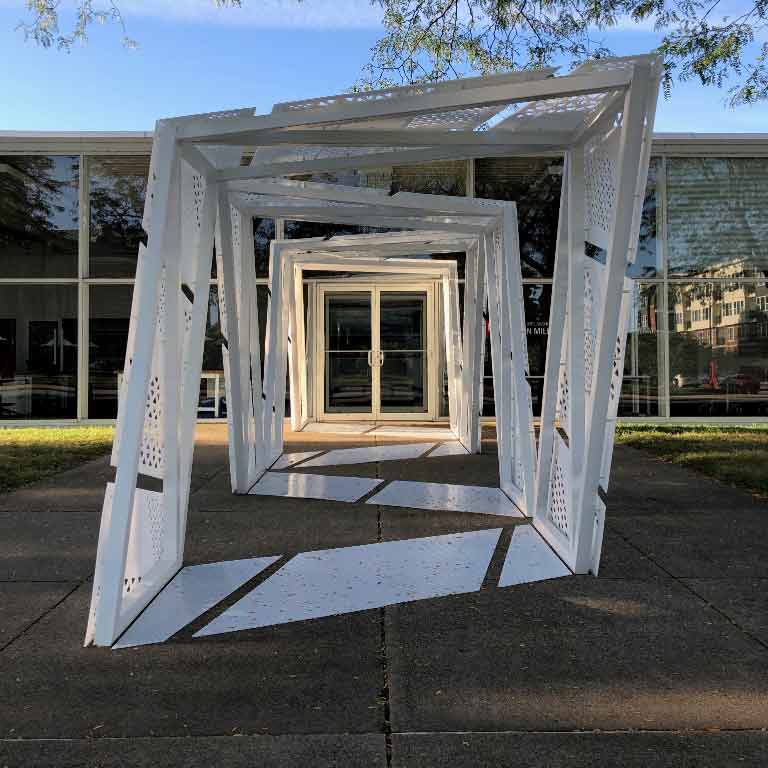Source: News at IU
Light shines through the perforated panels of the 30-foot portal to the Republic Building, creating patterns of shadows that shift with the moving sun.
"The quality of light and shadow will change constantly, creating a kaleidoscope of light and color," said Daniel Luis Martinez, an assistant professor in the Indiana University J. Irwin Miller Architecture Program, which is based in Columbus, Indiana.
Created by Martinez and fellow assistant professor Etien Santiago, along with five of their students, as part of the annual Exhibit Columbus event, "Entry Portal" welcomes visitors and students into the Master of Architecture program's building, which was once home to Columbus' newspaper, The Republic.
The building, completed in 1971, was designed by architect Myron Goldsmith, who was a protégé of the famous architect Ludwig Mies van der Rohe. It is a late example of mid-century modern architecture with its steel and glass elements, Martinez said.
An original design by Mies is the inspiration for a building that will soon be constructed on the IU Bloomington campus for the Eskenazi School of Art, Architecture + Design.
Despite the architectural significance of the Republic Building, Santiago said that it never benefited from a clearly advertised main entrance.
So they wanted to create something that would visually welcome passersby to enter the building through the door facing the highly trafficked Second Street, while symbolizing the flow of ideas that also go in and out of the building, he said.
The portal is a part of Exhibit Columbus, an annual event that explores art, architecture and design while celebrating the heritage of Columbus. Martinez and Santiago received one of six University Design Research Fellowships from Exhibit Columbus to complete the project. The IU College of Arts and Sciences Ostrom Grants Program provided additional support.
The annual event opened over the weekend and will be on display through December, along with over 15 other temporary installations throughout Columbus.
Martinez and Santiago started working on the project while teaching last fall. In their course, Martinez said they discussed the community, the program, the historic building and its architecture with students while working through multiple iterations of the project.
This made the project unique from many university design teams, because the students were involved from the first steps, Santiago said.
"Everything was on the table, from an actual table to a giant seesaw," Martinez said. "We really wanted to create a threshold between the city and the building."
The final project was made from a series of modular structural elements composed of welded steel tubes. Then, the steel was clad with CNC-milled plastic panels to produce a passageway of light and shadows.
Another unique aspect of this project is that it was small enough for the design team to be involved in every detail, Martinez said, adding that he and Santiago got to know all the local suppliers from Columbus as well as nearby Seymour and Hope, Indiana. And that was yet another way to build a bridge between the university and the community, Martinez said.
As part of Exhibit Columbus, the portal is temporary, but Martinez and Santiago said that's all part of the plan to build interest and celebrate architecture.
"One of the reasons this event was created was to spark new interest in older architectural landmarks," Santiago said. "We know that the Republic Building isn't leaving, and eventually it will be another designer's turn to add to this landmark."


